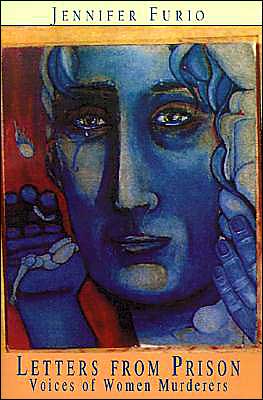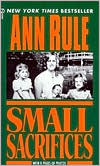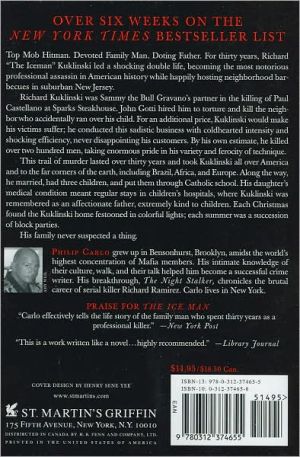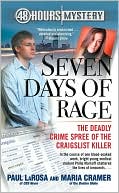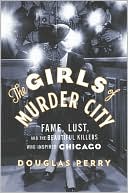Letters from Prison: Voices of Women Murderers
Search in google:
\ \ Chapter One\ \ \ A Message to the Readers\ \ \ My first published title, a compilation of letters from male serial killers, created more controversy than I had anticipated. Why would a woman choose to correspond with killers? Readers were left to wonder how I "pulled" information from the men who were being profiled, and many readers reported that they were left with a feeling of something missing.\ There is a distinct value in listening solely to the voice of a killer. When the author's perspective is withheld, an intimacy with the perpetrator evolves. I believe this to be an unsettling but enlightening journey, and a unique opportunity for readers to "become" the person at the other end of the dialogue. But with new books come new ideas and new ways to relate to the subject—and to the reader.\ The questions that were asked most frequently (aside from those regarding the murderers, themselves) were, What about the author — what did she say to the convicted, and what was her stance? To address those concerns, I decided to offer a few of my own letters as part of this book. After all, if the women were so candid as to reveal their darkest moments and their greatest tragedies, I should reciprocate by sharing, myself. Asking a person to reveal an intimate story is asking for a great deal of faith. The women first had to trust and, indeed, respect me, before truly opening up; a woman would certainly be less inclined to tell me why she shot her husband if she thought I would respond with a vivid description of my garden in spring! Asa friend and a writer, I offered parts of myself, and stories from my own life, to women whose lives and selves have been perpetually exploited and controlled.\ I am the mother of two, and married. There is no great mystery in the dichotomy between my own tranquil life and my ability to communicate with the subjects in this book. The "housewife-meets-killer" tabloid slant is not the great intrigue behind my work. In truth, this writing derives from a simple belief that we all have both an inner greatness and beauty, and an inner capacity to commit even the most evil and despised acts. Of course, we are not all murderers, and most of us will never go further than fantasizing about such an act (if that!), but we have all known moments of darkness.\ Why did these women write to me? Because of my willingness to relive their tragedies with them, and to offer places where we could tap into shared commonalities. I didn't have to be a killer to understand rage. I didn't have to know rape to understand violation. I learned to speak to the women about their experiences by addressing any shred of similarity and by exposing any connection that provided the women with a belief that I could find a way to relate to them. These women needed to offer their thoughts about their crimes to someone who would listen without shock or disdain. Because I offered the women empathy, understanding, and the space to share without judgment, I succeeded in forging relationships with them.\ I spoke candidly about some of my own less-than-memorable experiences, at times with shame, and at times with an insight gained only in hindsight. Sometimes, I allowed for conversation about my family, but this was kept to a minimum.\ When a woman was sharing thoughts about children, possibly having killed her own, she might ask me: "How does a `regular' person deal with frustration when her children can't be quieted?" Answering such a question, I would perhaps discuss my own family life in comparison and open up my own experiences to inquiry. While I might be empathetic to feelings of confusion and emotional despair, I could only write that I understood from afar. My openness should not be mistaken as affiliation with murderous thoughts, but rather as an intention to look more closely and more honestly.\ While I was willing to disclose parts of my own life (if I felt it would help the women in their process of correspondence), I was less than eager to share specifics when it meant giving up my own privacy or that of my family. If my letters appear trite at times, it may simply be that I have chosen to edit myself in those paragraphs or pages, interrupting the dialogue for reasons of anonymity. At other times, I may seem to ramble on too long, but this may be what I sensed the woman on the other end of the correspondence needed in order to allow trust to develop. I have included only a few of my letters, since the focus of this work is the words of those women imprisoned for murder, and my role is, at heart, secondary.\ My letters to the different women are as unique and individual as the women themselves. I learned how to speak on many levels and to different ages and mentalities, with the purpose of coming to understand why these women murdered — or to argue that they did not. I addressed the women in a variety of ways, not to manipulate them or to con information from them, but rather, to listen carefully to their individual needs, and to write accordingly. The book is pure, honest, and infinitely personal.\ At the core of the book lies an understanding of the women whose lives have been filled with tragedy, and who have themselves created horrific tragedy; it is also the story of the woman who was interested in knowing why.\ \ \ * * *\ \ \ The letters that follow offer intimate details from the lives of women who were driven to kill. They also provide honest explorations of the emotional scars born from these women's childhood, familial, and adult experiences of violence, abuse, and neglect. Abuse and molestation weave through the lives of these female killers like road maps of pain. Their letters volunteer a recognition of the damage done to their souls, the death and decay of their spirits as women, and the overwhelming darkness that finally led them to murder.\ It is not my intention to devalue the lost lives of the victims by corresponding with murderers, but until somebody listens to these women's stories, such atrocious crimes will continue. Evil begets evil; violence perpetuates itself; and victims of violence do what they must to survive.\ In order to identify the origins underlying the violent path these women have taken and how to circumvent this in the future, each woman must be examined and understood in her entirety. For the women themselves, and for us as readers, investigating their childhoods and their own victimization is a difficult but necessary endeavor.\ Why should we care to understand these killers? Because their stories and their experiences resonate with our own lives in powerful and frightening ways. Because we are all in some way connected to women like them — we either know them, or are their sisters or brothers, their friends, their children, their parents, their abusers, their lovers, their neighbors, or their victims. In the face of violence and grief, our first response is to ask why: Why me? Why now? Why did these women do this? Broadening our perspective to include theirs will bring insight, even compassion. Reading the letters may evoke sadness, pity, confusion — all responses to our increasing and uncomfortably real understanding of why women kill and why their crimes are neither the first nor the last acts of violence in their stories. Since these correspondences are one-on-one experiences with complex personalities, after reading their letters it becomes nearly impossible to cluster all female killers into a simplified category of evil.\ Criminologists and psychologists who work in this field emphasize the importance of mitigation (the recognition of the background against which crimes occur, and the consideration of earlier histories that may alter later decisions) when discussing people who kill. In many cases, the violence in these women's lives can be traced, from their childhoods throughout their adulthoods. While most abused women and children do not commit violence later in their lives, most women who do commit violence have been violated themselves. The majority of violence committed against women and children goes unpunished, and even when such cases are brought to court, the sentences are ridiculously short.\ Although it would not be feasible to have a window into every child's private life, proactive organizations geared toward helping to identify children in need do exist. Money spent on social programs is not only humane, but cost effective as well. Hopefully, fewer crimes, fewer prisons, and fewer prisoners would result from real investment in prevention. While we bemoan the cost of keeping a "lifer" in a state penitentiary (and execution is not cheap, either), intervention and prevention continue to be under-funded and labeled as unnecessary expenditures.\ This lack of attention is shocking, considering that the Surgeon General has reported battery as the single largest cause of injury to women. By the hands of their abusers, between five and thirteen women are killed every day. While crime rates have gone down across the country, statistics for crimes against women have remained constant.\ With such figures in mind, it isn't surprising that abused women can become obsessed with their survival and, as a last resort, some turn to violence. Such actions are not evil, but the only reality available to these women.\ It appears that women face emotional cruelties from the legal system, on top of their personal suffering. The following women's stories show that the judicial process regularly fails to sympathize with women's needs and situations. After conviction, women are often relocated away from their families, their children, and their support systems. As recounted by the women in this book, many courts frequently ignore abuse and other mitigating factors, all signs of an extreme gender bias. The women I profiled frequently reported feeling that they had been punished by the justice system for not being "motherly" or "feminine" enough, for being single mothers, or for defying their gender roles.\ While women comprise only a small percentage of the total U.S. prison population, they are in fact the fastest growing group in prison. The women's stories that you are about to read reveal what life in prison is like, but in a number of ways these women are not representative of the rest of the female prisoner population. The vast majority of women are in jail for non-violent crimes. At the same time, around 60% of women in prison are women of color — evidence of the extreme racial bias in the court system. One of the white women in this book, Pamela Smart, reports about death row inmates (based on her own experiences as an inmate), "I feel [that many] are underrepresented legally, and that racial discrimination often taints their convictions and sentences." While most of the cases detailed in this book received excessive and harmful media attention, it is also important to note that the stories that receive the most publicity are those of white women. The potential reasons for this are numerous and the most likely explanations can be found at the intersections of race, class, and gender.\ Regardless of how much media attention their cases receive, the stories of women in prison are miserable. The crimes committed by the women in this book are often overshadowed by the excessive nature of their punishments. The following pages show that these killers were taught their rage. Without support or encouragement, many of these women lived their lives and fought for their survival within the narrow confines of terrifying and relentless abuse and violence.\ There are a couple of exceptions, however: stories that follow patterns of team killings and serial violence. On the surface, the two women in this book whose crimes and motivations deviate from those cycles of abuse that are characteristic of most of these women's lives, but their letters are potent reminders that the notion of prisons serving as a place for rehabilitation is far from reality. Prison is a place of punishment, and while most of the women in this book have struggled to come to terms with the reality of their violent pasts and the harm that they have done, they are doing so without the support of the system and in spite of the realities of incarceration. One of the themes that emerges throughout the letters is the need for prison reform in order to protect the rights and sanity of all prisoners.\ Predictably, the letters do not promise a resolution, though they do allow readers to approach a subject that is typically viewed as frightening with less apprehension. This information proves that evil is not innate, that these women's violent actions are the partial result of their physical, emotional, spiritual, psychological, and sexual abuse — all circumstances that are avoidable.\ The cynical mind may argue that it is shameful to offer the killer a voice. Not so. Though some may feel guilty reading the words of a murderer, this is not a betrayal of the dead or some evil part of ourselves emerging, driven by a voyeuristic curiosity. Instead, we have a responsibility to try to understand the rage behind these women and their crimes. A willingness to hear them is a demonstration of tolerance. As we listen, we discover an ability to understand and even to accept women who have been rejected, ignored, exploited and violated.\ Each of the women with whom I corresponded said that, at some point, she wished she had told someone about her terrors. As children or wives, they had learned to keep abuse a secret. As adults exhibiting their own violent tendencies, they bore another secret. Women who kill believe that they are alone in their deviance. This is a fallacy. Thousands of women live daily with depression and confusion, which can make them a danger to themselves and others.\ But these fractured souls can be repaired with meaningful and honest intervention. Whether read from the standpoint of education, curiosity, or an effort to identify with the women, this dialogue informs us as individuals and as a society that patterns of violence must be understood and acknowledged before the can be stopped.\ For sharing with us this wealth of information, the women are commended. They were brave enough to write to you, when they made their decision to write to me. These women allowed strangers to look inside their souls.\ Before you judge the inmates' earnest attempts to express themselves, stop for a moment. Allow the opportunity for empathy. Do not worry: these people will not cease to be judged. The media will continue to present society with images of murderous women — "monsters" so disgraceful and frightening that they satisfy the public's need for blood, violence, and hate. And beyond the cameras women in prison will continue to suffer — violence, rape, separation from children and family, even death.\ Whatever the final conclusion, these letters force an intimacy with the female killer. Seen through their own words rather than through the typically sensationalized "demonic" light, these individuals can be seen as human beings, women who lost a part of themselves along the way.
Foreword5 A Message to the Reader7 The Women and Their Letters "Laney": The Making of a Murderer15 Terri Rachals21 Kristine Bunch45 Pamela Smart67 Diane Bowerman85 Hope Rippey and Toni Lawrence97 Brenda Spencer121 Christina Riggs139 Betty Broderick151 Carol Bundy161 Shirley Curry177 Suzan Carson193 Veronica Compton211 Epilogue229 Acknowledgements233 About the Author235
\ Library JournalThis disturbing book consists of the correspondence between the author, a prison-reform activist and student in women's studies and criminal psychology, and 13 women convicted of murder. Using the lengthy letters she received from these women, Furio draws attention to their humanness, their shared backgrounds of terrible abuse, and the biases they often encounter in dealing with the criminal justice system. Unlike her first book, The Serial Killer Letters: A Penetrating Look Inside the Minds of Murderers (LJ 11/1/98), which focused on men, this volume includes some of the author's own letters to her subjects. Readers may question the wisdom or intrusiveness of these consoling, thoughtful letters do they offer false hope? and they will almost surely shudder at the crimes these women committed. The women's expressions of regret are profound, however, and their discussions of what drove them to commit the murders and what their lives feel like now are touchingly insightful and lucid. Recommended for all libraries. Ellen D. Gilbert, Rutgers Univ., Lib., New Brunswick, NJ Copyright 2001 Cahners Business Information.\ \ \ \ \ BooknewsThis compilation of correspondence with women convicted of murder details, in the words of the convicts, what drove them to their crimes and describes their current emotional state. Their stories shed light on the common traits (and the differences) that exist among female prisoners. Along the way, Furio (a prison-reform activist) reveals the biases in the criminal justice system and the media. Annotation c. Book News, Inc., Portland, OR (booknews.com)\ \
